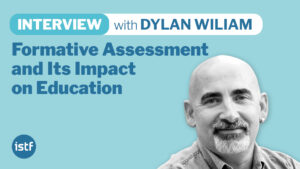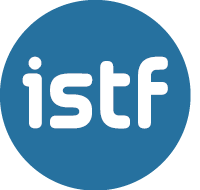The Simplest Yet Most Powerful Way to Promote the Cognitive Development of Young Children
28 de mayo de 2024
One of the simplest yet most powerful ways to contribute to the cognitive and emotional development of young children, particularly in helping them develop their ability to learn, is… talking to them. Indeed, beyond feeding and caring for them with affection, of course, taking the time to interact with them through verbal language is as simple as it is essential for their development.
Long before they utter their first words, young children are already learning verbal language. And the stimuli that will help them the most in this learning process are the conversations of the people around them, especially when directed toward them. In fact, before the age of two or three, few things contribute more to their cognitive and emotional development than the stimuli they receive from direct interaction with people in their environment [1].
When we talk to them, one of the most enriching aspects of their cognition is the vocabulary they acquire. Words are indispensable building blocks of our thinking; they give us access to new ideas and concepts, expand our perception of the world, and increase our ability to reason and learn.
Various studies show that by the age of three, an important difference between preschoolers—one that greatly impacts their learning as they start school—is the vocabulary they know. And this difference is largely due to the opportunities each child has had to develop their vocabulary earlier in the family environment [2].
The Power of Reading and Sharing Stories
That’s why, if there’s something even more important than talking to young children or letting them listen to our conversations, it’s reading stories to them.
Indeed, stories are part of human nature. Since the dawn of our species, generation after generation, we’ve shared knowledge and worldviews through storytelling. It’s easy to imagine our ancestors sitting around a fire, sharing stories of all kinds..
The human species evolved alongside stories. Perhaps that’s why cognitive scientists say that stories hold a special place in our minds [3]. First, because we find them fascinating and they capture our attention. We could spend hours listening to stories and still want more (“What happens next?”). This might be because stories present problems that need solving, and our brains love to solve problems.
Whatever the reason, stories are also easier to understand and remember than other forms of communication, which makes them a powerful teaching and learning tool. With stories, children (and adults, too) not only learn facts and ideas; they also enrich their vocabulary—especially when these stories come from books.
Because if there’s one place where vocabulary is much richer than in everyday spoken language, it’s in written texts. That’s why reading stories to young children is so beneficial.
The Value of Shared Reading
If reading them stories is a unique experience, there’s something that makes it even more extraordinary: sharing those stories with them [4]. Shared reading involves pausing while reading a story to engage with children—asking them about what’s happening in the story, predicting what might happen next, pointing to a picture and discussing its connection to the story, or even drawing their attention to the words in the text [5]. This helps them understand that writing is a representation of speech, that written texts capture someone’s voice in symbols drawn on paper.
Needless to say, sharing stories also creates emotional bonds that will motivate children to see reading as a pleasurable activity, associated with good memories.
In short, few things are as simple yet as powerful in helping our children. Words are the most extraordinary gift we can offer them to discover the world, build connections, broaden their horizons, and enhance their ability to reason and learn.
Let’s talk to them, read them stories, and share those stories with them.
WRITTEN BY Héctor Ruiz Martín
Director of the International Science Teaching Foundation. Researcher in cognitive neuroscience and the psychology of memory and learning. Member of the Learning and Teaching Science Research Group at the Universidad Autónoma of Madrid. Author of «Edumitos». Ideas sobre el aprendizaje sin respaldo científico (ISTF), Los Secretos de la Memoria (Ediciones B), How Do We Learn? (Jossey Bass), and Learning to Learn by Knowing Your Brain (John Catt).
If you want to learn more about Héctor Ruiz Martín’s research and outreach work, you can follow him at @hruizmartin
References:
- [1] Tamis-LeMonda C.S., Kuchirko, Y., Song, L. (2014). Why is infant language learning facilitated by parental responsiveness? Current Directions in Psychological Science, 23:2121–26 // O’Doherty, K., Troseth, G. L., Shimpi, P. M., Goldenberg, E., Akhtar, N., & Saylor, M. M. (2011). Third‐party social interaction and word learning from video. Child development, 82(3), 902-915.
- [2] Rindermann, H., & Baumeister, A. E. (2015). Parents’ SES vs. Parental Educational Behavior and Children’s Development: A Reanalysis of the Hart and Risley Study. Learning and Individual Differences, 37, 133-138. // Cartmill, E. A., Armstrong III, B. F., Gleitman, L. R., Goldin-Meadow, S., Medina, T. N., & Trueswell, J. C. (2013). Quality of early parent input predicts child vocabulary 3 years later. Proceedings of the National Academy of Sciences, 110(28), 11278-11283.
- [3] Willingham, D. T. (2004). Ask the cognitive scientist the privileged status of story. American Educator, 28, 43-45.
- [4] Zucker, T. A., Cabell, S. Q., Justice, L. M., Pentimonti, J. M., & Kaderavek, J. N. (2013). The role of frequent, interactive prekindergarten shared reading in the longitudinal development of language and literacy skills. Developmental psychology, 49(8), 1425.
- [5] Piasta, S. B., Justice, L. M., McGinty, A. S., & Kaderavek, J. N. (2012). Increasing young children’s contact with print during shared reading: Longitudinal effects on literacy achievement. Child development, 83(3), 810-820.










